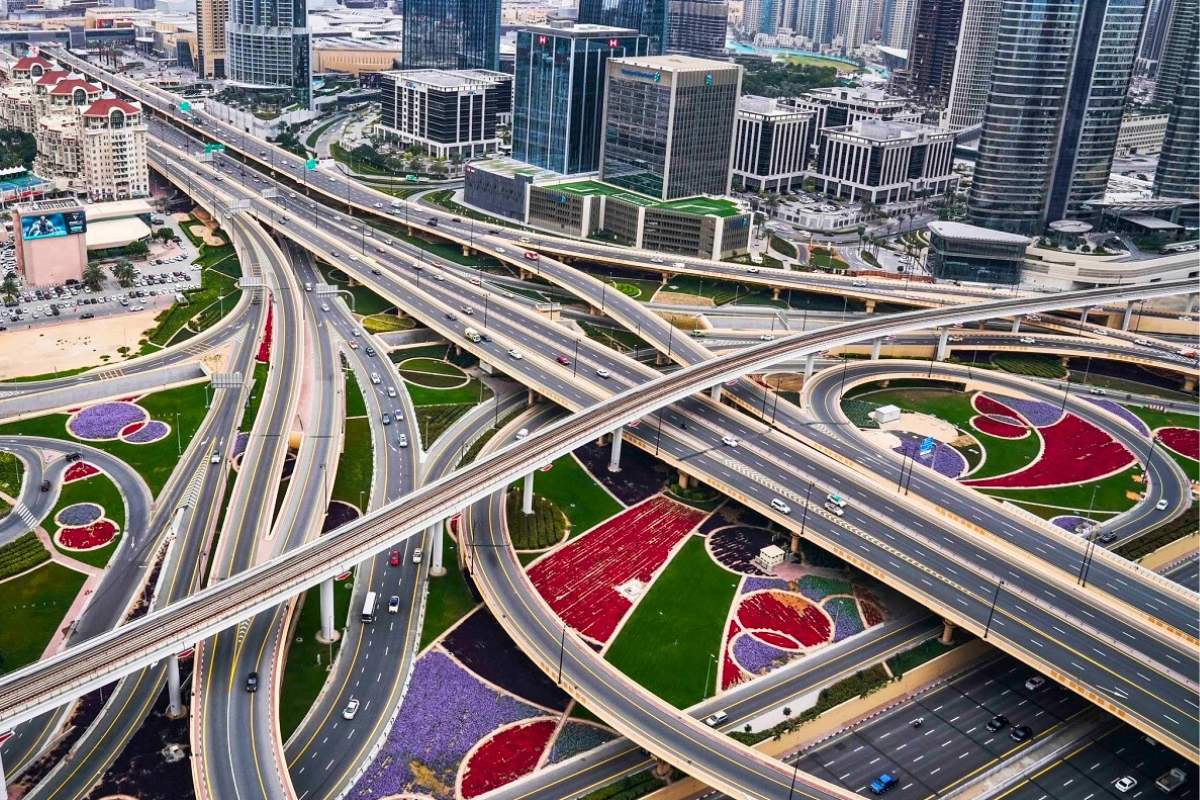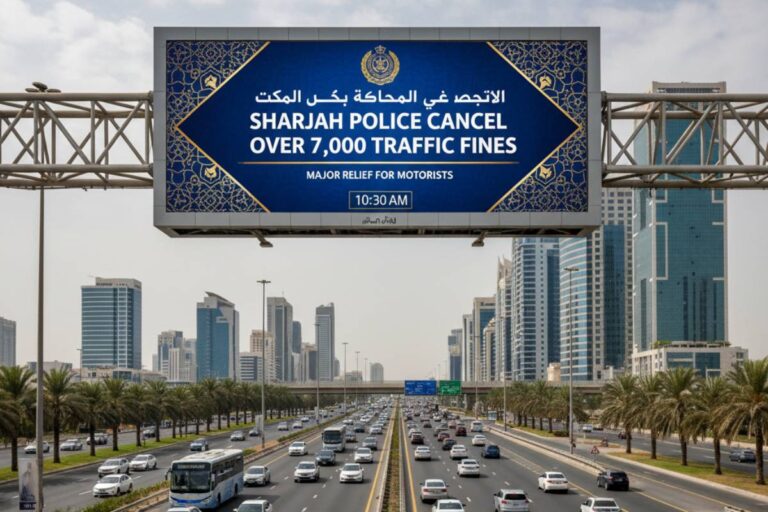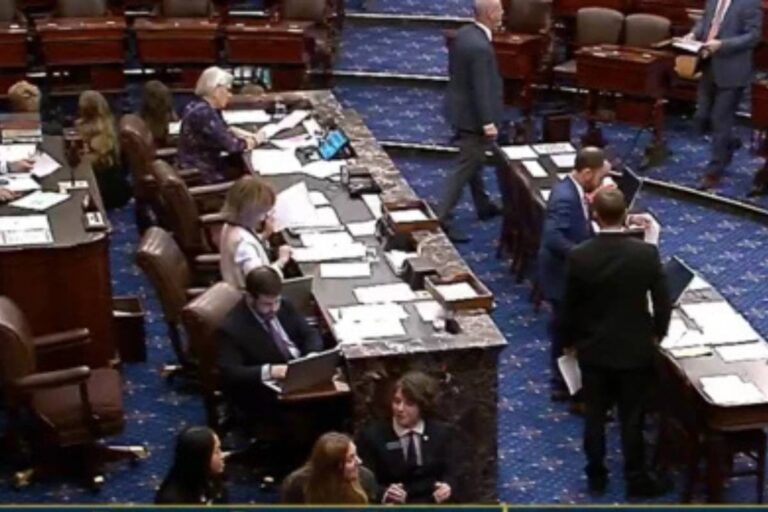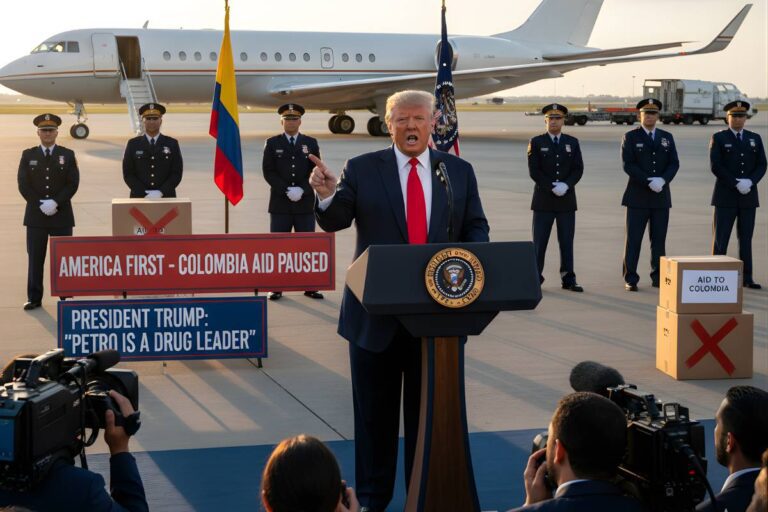Dubai is embarking on a major transformation of its road network under the Roads and Transport Authority’s (RTA) 2025-2027 Strategic Plan. The massive project involves upgrading existing roads and building new corridors designed to enhance traffic flow, boost capacity, and serve the emirate’s expanding population, which is expected to hit 8 million by 2040.
Key Highlights of the RTA’s Strategic Plan:
The RTA strategy includes 57 projects spanning 226 kilometers of roads and the building of 115 bridges and tunnels. One of the main priorities is upgrading 11 strategic road corridors, consisting of eight vertical corridors and three new routes.
Major Road Corridor Improvements:
- Umm Suqeim–Al Qudra Corridor: This 16-kilometer corridor will link Jumeirah Street and Emirates Road, serving more than one million residents. The first segment, stretching from Umm Suqeim Street to Sheikh Mohammed bin Zayed Road, is 50% completed. The development entails 7 kilometers of tunnels and bridges on four upgraded interchanges. Upon delivery, the corridor capacity will go up from 8,400 to 12,600 vehicles per hour, and journey time will be reduced from 46 to 11 minutes.
- Hessa Street: The improvements in four critical intersections are about 60% done, with some parts of it already open. The project involves 9 kilometers of bridges, which double the capacity of the road from 4,000 to 8,000 vehicles per hour and decrease travel time from 30 to 7 minutes. This improvement will serve about 640,000 residents. A 13.5-kilometer cycling and e-scooter path with two unique bridges over Sheikh Zayed Road and Al Khail Road will also be included.
- Al Fay Road Corridor: The project stretches Al Khail Road from Sheikh Mohammed bin Zayed Road to Emirates Road along Sheikh Zayed bin Hamdan Al Nahyan Street. It entails 12.9 kilometers of new road and 13.5 kilometers of bridges on five major interchanges. The corridor is expected to accommodate an additional 64,400 cars per hour and accommodate 600,000 residents once completed.
- Sheikh Zayed Road: Seven “quick-win” traffic solutions introduced from January to April 2025 have already contributed to a 5–10% decrease in congestion and a 9% reduction in traffic volumes following the introduction of dynamic tolling. Public transport ridership has also grown by 4%.
Other Major Corridor Developments:
- Latifa bint Hamdan Street: A 12.2-kilometer road between Al Khail Road and Emirates Road is under construction, comprising 8.1 kilometers of bridges.
- Al Meydan Street: The improvements from the Al Khail Street junction to the Cyclists Club were 85% finished as of November 2023 and will greatly minimize peak-hour travel time.
- Al Mustaqbal Street: Phase 1 deals with upgrading from Financial Centre Road to Zaabeel Palace Street, expanding road capacity, and easing travel times.
- Dubai World Trade Centre Roundabout: To be revamped into a high-capacity intersection with five new bridges, designed to significantly decrease delay and travel times.
Aligning with Dubai’s 2040 Urban Master Plan
These road improvements are in accordance with Dubai’s long-term strategy under the 2040 Urban Master Plan, with the goal of building a seamless and sustainable mobility network, promoting the use of public transport and alternative means such as cycling.
Conclusion:
The RTA’s extensive road improvement program is an indication of Dubai’s dedication to building a modern, efficient, and sustainable transport network for its people and visitors, providing hassle-free mobility for years to come.























appreciable and future forecasted planning.